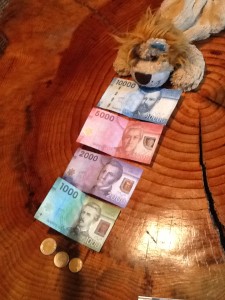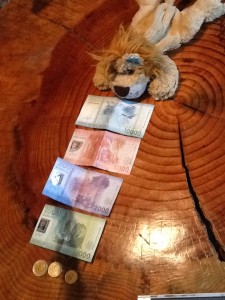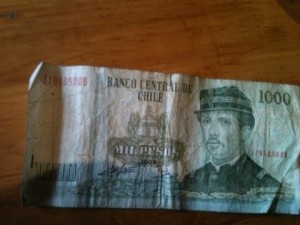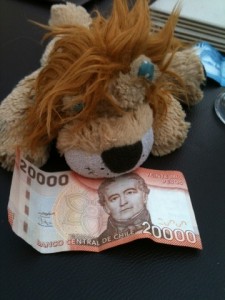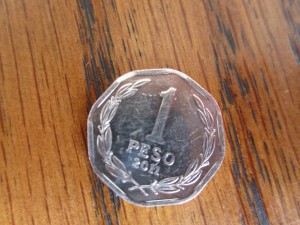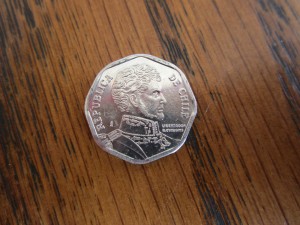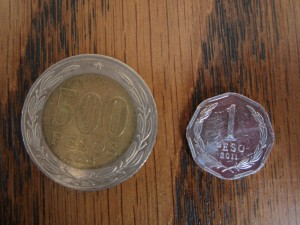As Lewis the Lion discovered when he first arrived in Chile, the Chilean currency – the Chilean Peso – seemed to operate in huge numbers. There just seemed to be so many zeroes!
Here are some photos of Lewis with some of the main notes used.
On the front of the note are famous Chileans and on the back of the notes are sketches of some of the beautiful landscapes found in Chile.
The notes that Lewis the Lion used generally seemed to be quite new and in pristine condition. However, he did come across an old one thousand peso note still in circulation which looked like this:
A $1,000 Chilean note is worth approximately £1.30
That means that a $100 coin is worth 13p.
Or conversely, £1 is worth 781 Chilean centavos. (There are 100 centavos in 1 peso).
Here Lewis is sat beside the biggest note that he came across in Chile, a $20,000 Chilean Peso note.
How much would this be worth in pounds and pence?
In Chile, surprisingly they also have a tiny $1 centavo peso coin which is practically worthless.
It actually costs more to make them than they are worth and Lewis the Lion was told by his tour-guide that if he received one, to keep it as a souvenir!
If you were to design your own souvenir coin, what would it look like?
Would it commemorate a special event?
Would it show a particular location?
Describe what you would do to a friend or draw a picture of it.

